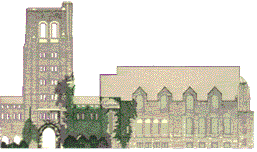 liibulletin-patent |
Marquip, Inc. v. Fosber America, Inc., No. 99-1025, -1120, 1999 WL 1101387, (Fed. Cir. Dec. 6, 1999)
PATENT - DOCTRINE OF EQUIVALENTS - HYPOTHETICAL CLAIM RATIONALE - CORRUGATED PAPERBOARD SHEETS
ISSUE & DISPOSITION
Issue(s)
Whether summary judgment of non-infringement under the doctrine of equivalents is properly granted where the range of asserted equivalents would encompass elements of the prior art.Disposition
Yes. Using the hypothetical claim rationale test, when the proposed range of equivalents, if written as literal claims of the patent would encompass elements of the prior art, the accused device does not infringe as a matter of law. Marquip failed to allege or prove any material facts to show that the claimed range of equivalents does not encompass the prior art. Therefore, summary judgment is appropriate.SUMMARY
Marquip, Inc. is the owner of United States Patent No. 4,200,276 (the '276 patent) which claims a method and device for shingling and stacking corrugated paperboard sheets without interrupting the continuous flow of sheets. The claims at issue teach a method and device for automatically changing the speeds of conveyor belts to create a gap between the paperboard sheets. Marquip, Inc. sued Fosber America, Inc., for infringement of the '276 patent. Marquip now appeals the decision from the Western District of Wisconsin, that the Fosber device did not infringe the '276 patent under the doctrine of equivalents. Marquip also appeals the district court's denial of Marquip's Rule 60(b) motion.
An accused device infringes under the doctrine of equivalents if the device contains either every claim element, or its equivalent, where the differences between the accused device and the patent claims are indistinguishable to someone with ordinary skill in the art. In order to prevent a patentee from obtaining protection under the doctrine of equivalents that it could not have obtained by literal claims from the Patent and Trademark Office, the Federal Circuit limits the range of permissible equivalents by reference to the prior art. In this case, the court used the "hypothetical claim rationale", to determine the scope of permissible equivalents. Under this test, the court hypothesized a hypothetical claim that would encompass all the elements of the accused Fosber device. The court then determined whether the hypothetical claim would encompass prior art. Because a prior art patent already described the operation of the accused Fosber device, the court held it improper to extend the '276 patent claims to the Fosber device. Marquip failed to satisfy it's burden of proving that the asserted range of equivalents would not ensnare the prior art. Therefore, the court affirmed the district court's grant of Fosber's motion for summary judgement of non-infringement as a matter of law.
Marquip also argued for relief under Rule 60(b) alleging that Fosber withheld pertinent evidence about its device during discovery. As a Rule 60(b) motion is a purely procedural question, the Federal Circuit defers to the rule of the regional circuit court. Here, the Seventh Circuit applied an abuse of discretion standard. Applying this standard, the Federal Circuit determined that the newly discovered facts would have been critical to both the initial judgment and the affirmance of that judgment on appeal. Therefore, the Federal Circuit held that the district court did not abuse its discretion in measuring the timing of Marquip's Rule 60(b) motion from the date of the initial judgment (instead of the judgment on remand), placing the motion outside of the one-year limitation. Relief under the "catch-all" provision of Rule 60(b)(6) is available only in extraordinary circumstances or when the basis of relief falls outside of the enumerated provisions, and therefore would not apply.
Prepared by the liibulletin-patent Editorial Board.
|
|
